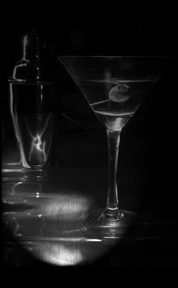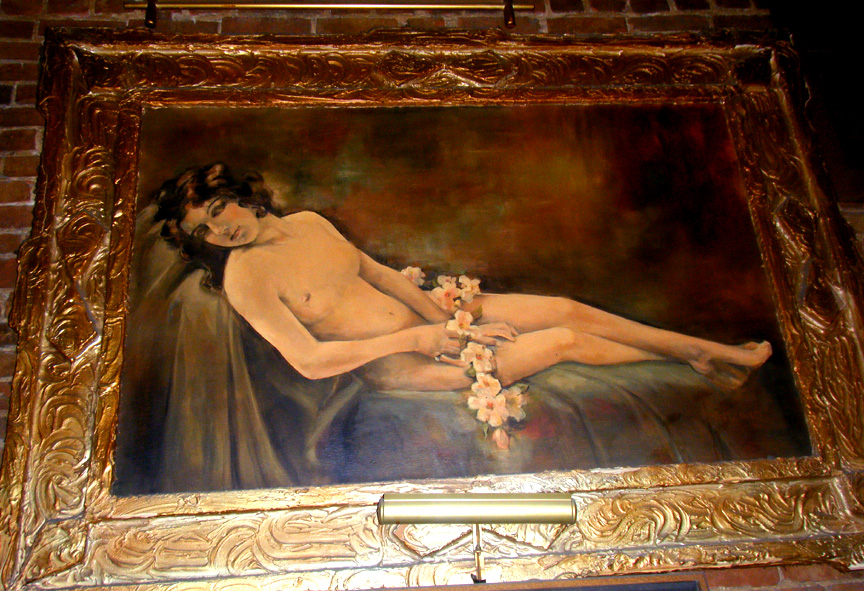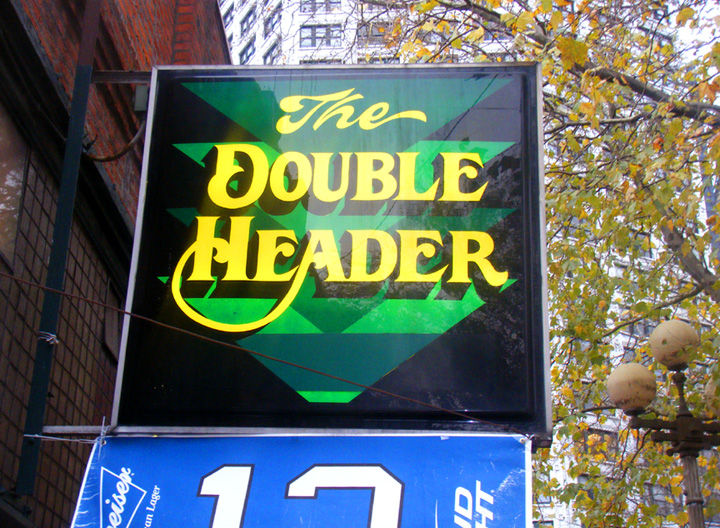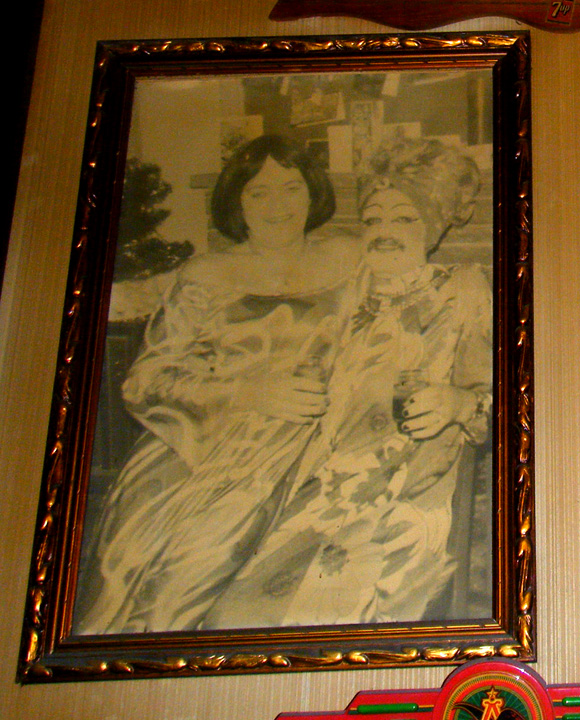
Back to Seattle's
Most Interesting Bars

The Casino Pool Room, 1930-1955?
and the Double Header, 1934-2015

Like the Black & Tan Club and Jackson Street jazz scene, the Casino Pool Room is interesting not only in itself, but also as the outstanding example of a once extraordinary and nationally known nightclub scene which has virtually disappeared, in this case the downtown Seattle gay club scene. And like the Jazz scene south of Yesler Way, this scene too was able to thrive thanks to a highly developed system of paying off the police, AKA Seattle's unofficial "Tolerance Policy."
Few Seattlelites, gay or straight, recognize that tucked behind an ordinary looking Pioneer Square dive bar facade until the end of 2015 was probably the oldest gay bar in the country, and two linked locations that were for several years the most legendary gay bars in the U.S. Many probably assumed that the "Double Header" was named for the baseball played just a few blocks south, rather than its true source, the novelty of separate bathrooms for women and men.
While the Double Header Bar, which closed only at the end of 2015, quickly became a regular hangout for gays and drag queens mixing with straight people, it was "The Casino Pool Room," downstairs which became the most famous open place for gays on the west coast. Nicknamed "Madame Peabody’s Dancing Academy for Young Ladies," the Casino was located in the current location of Heaven Nightclub (formerly The Catwalk), and according to Steve Thornton, the space has been operating more or less continually since 1890. (1) But it was after it was purchased by Joseph Bellotti in 1930 and operated by John and Margaret Delevitti that it quickly became a nationally known haven for gays. With Delevitti paying off the police, men could dance openly with other men at The Casino (an impossibility in most other cities) and drag queens could remain largely unharrassed.

Thornton (AKA "Fnarf") notes, 'The club was originally John Considine's "People's Theater", a box house featuring ladies who would dance on stage and then walk through the audience between numbers, serving drinks and going behind the curtains in the boxes around the perimeter for special services.'(ibid)
The Casino and Double Header would attract gay visitors and various celebrities from around the country, including the likes of Rudolph Nureyev, Johnny Ray, Margot Fonteyn, and Tallulah Bankhead. The unrestrained Ms. Bankhead is cited by historical sources as entering the upper bar with her retinue, ringing a cow bell, and shouting to the assembled queens, "Avon calling all you beautiful motherf***ers!" The cow bell remains hanging on the Double Header wall to this day.
One of Seattle's most prominent gay men and drag queens of the time, who was known as "Vilma" after the actress Vilma Banky, moved to Seattle from Minnesota in 1930, hanging out and working part time at the Double Header until near his death in 1993. Vilma described the scene this way to Don Paulson and Roger Simplson:
"That's all I heard, Seattle, Seatle, Seattle, and this fabulous place called the Casino and all the neat kids there.... We arrived in Seattle on June 15, 1930 and headed straight for the Casino.... When you came down the stairs from Washington Street, you’d find a small restaurant area and a long bar across the room where they sold soft drinks and near beer, which was one-half percent alcohol, the legal limit during Prohibition. But we’d go down to shacktown called Hooverville and buy a pint of whiskey and bring it back to the Casino and drink it there at the bar. The Casino had two pool tables and tables for playing cards. It was a crossroads. There were lots of gay kids at the Casino and we made friends right away."
"There was a pool hall across the street from the Casino where all the boosters [shoplifters] and hustlers hung out. John [Delevitti] and Margaret wouldn’t let anyone mess with the queens. A queen was anyone who was gay and didn't try to hide it. They protected us and we loved them for that, but you didn't mess with them or take advantage of their kindness. They’d do anything for you if they liked you, even bail you out of jail, but if you crossed John he'd throw you out in a minute, gay or straight. The Casino was the only place on the West Coast that was so open and free for gay people. But John paid off the police; he was good at working the payoff system." (2)

I am not certain what year The Casino closed. It is listed as the "Casino Tavern" thoughout the 40s, and the last listing in Polk city guides is as the "Casino Lunch" in the 1955. The gay scene seems to have dwindled nationally during the 1950s, but the Seattle downtown area still had several gay bars, seven of them by the late 50s, and several expressly for lesbians (gay men and lesbians had previously occupied separate sections of Seattle gay bars like the Spinning Wheel and the Garden). (3)
However by the late 60s and early 70s, the "tolerance policy" of paying off cops was ended, and much of the Pioneer Square clubs were eliminated in urban renewal projects. In the late 70s, the Seattle gay scene started to shift to Capitol Hill, led by clubs like The Brass Door/ Brass Connection, opened by Ken Decker, who'd managed Shelley's Leg downtown until closed in 1977 (after a disastrous 1975 fire). (4)
The Double Header survived until December 31, 2015.
Further References:
An Evening at the Garden of Allah - Don Paulson, Roger Simpson - This is the most informative source I have
found on the old Seattle gay scene, and is routinely cited in online sources
historylink.org
historylink.org #2
Seattle PI
Photo from street (Seattle Municipal Archives)
Seattle Gay News
Footnotes:
1)
Seattle Municipal Archives
2)
An Evening at the Garden of Allah - Don Paulson, Roger Simpson
3)
historylink.org #2
4)
Author's notes, emails w/Jo David
